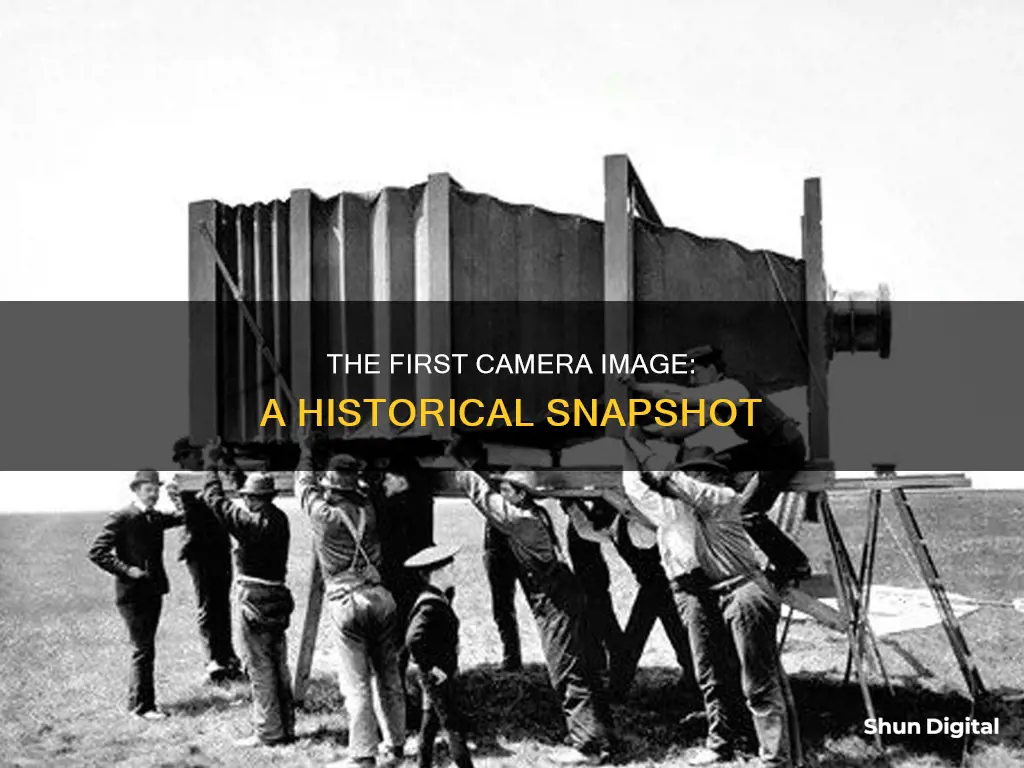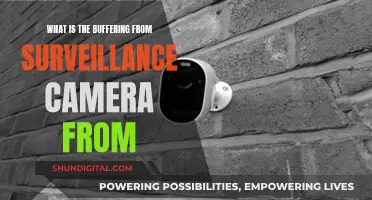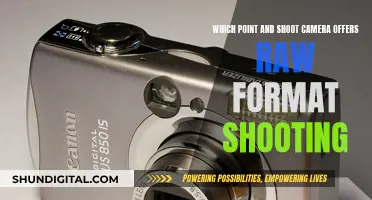
The world's first photograph was taken in 1826 or 1827 by Joseph Nicéphore Niépce using the first proper camera. The photograph was taken from the upstairs windows of Niépce's estate in the Burgundy region of France. This image was captured via a process known as heliography, which used Bitumen of Judea (the naturally occurring Syrian asphalt) coated onto a piece of glass or metal; the Bitumen then hardened in proportion to the amount of light that hit it. Niépce referred to this process as heliography.
| Characteristics | Values |
|---|---|
| Year | 1826 |
| Inventor | Joseph Nicéphore Niépce |
| Technique | Heliography |
| Image captured | View from the upstairs windows of Niépce’s estate in the Burgundy region of France |
| Process | Bitumen of Judea (naturally occurring Syrian asphalt) coated onto a piece of glass or metal |
What You'll Learn
- The first photograph was taken by Joseph Nicéphore Niépce in 1826/1827 using a sliding wooden box camera
- The process used was heliography, which involved coating pewter with bitumen
- Niépce's associate, Louis Daguerre, went on to develop the daguerreotype, the first publicly announced and commercially viable photographic process
- The first camera was invented by Niépce in 1816
- The first mass-marketed camera was a daguerreotype camera produced by Alphonse Giroux in 1839

The first photograph was taken by Joseph Nicéphore Niépce in 1826/1827 using a sliding wooden box camera
The first photograph was taken by Joseph Nicéphore Niépce in 1826 or 1827 using a sliding wooden box camera. The camera was made by Charles and Vincent Chevalier in Paris.
Niépce was a French aristocrat, scientist, and chemist who lived on his country estate near Chalon-sur-Saône, France. He was fascinated with the craze for the newly-invented art of lithography, which swept over France in 1813. He was particularly fascinated with the concept of light and was a fan of early lithographs using the "camera obscura" technique.
In 1816, Niépce began his initial experiments with photography. He placed engravings, made transparent, onto stones coated with light-sensitive varnish of his own composition. These experiments, together with his application of the then-popular optical instrument, the camera obscura, would eventually lead him to the invention of photography.
In 1824, Niépce met with some success in copying engravings. However, it would be two years later before he utilized pewter plates as the support medium for the process. By the summer of 1826, Niépce was ready. In the window of his upper-story workroom at his country house, he set up a camera obscura and placed within it a polished pewter plate coated with bitumen of Judea (an asphalt derivative of petroleum). After an eight-hour exposure, the plate was removed, and the latent image of the view from the window was rendered visible by washing it with a mixture of oil of lavender and white petroleum, which dissolved the parts of the bitumen that had not been hardened by light.
The result was the permanent direct positive picture—a one-of-a-kind photograph on pewter. It renders a view of the outbuildings, trees, and landscape as seen from that upstairs window. This photograph is known as "View from the Window at Le Gras".
In 1827, Niépce travelled to England, where he attempted to interest the Royal Society in his process, which he called "heliography". Upon his return to France later that year, he left the photograph with his host, the British botanist Sir Francis Bauer. Niépce formed a partnership with the French artist Louis Jacques Mandé Daguerre in 1829, but he produced little more work and died in 1833.
Kodak Camera Battery Exhausted: What's the Fix?
You may want to see also

The process used was heliography, which involved coating pewter with bitumen
The world's first permanent photograph was taken in 1826 or 1827 by Joseph Nicephore Niepce. The process used was heliography, which involved coating pewter with bitumen.
Heliography, from the Greek words helios, meaning "sun", and graphein, meaning "writing", was the first permanent photographic method. The name was coined by Niepce, who sought to produce an image that could be reproduced mechanically and profitably.
Niepce's heliographic process involved coating a pewter printing plate with bitumen of Judea, a type of asphalt substance that had actinic, or light-reactive, properties. The plate was then placed in a camera obscura, a device that projected an inverted image of a scene from the other side of a screen or wall through a small aperture. The bitumen hardened in proportion to its exposure to light, and the darker areas became more soluble in essential oils. Niepce used oil of lavender to dissolve the unhardened bitumen, leaving a positive image with the light areas represented by hardened bitumen and the dark areas by bare pewter.
Niepce's surviving photograph, "View from the Window at Le Gras" (1826-27), demonstrates this process. The image, owned by the University of Texas at Austin, shows buildings, a tree, and the landscape beyond. The process required a very long exposure time, traditionally said to be eight hours but now believed to be several days.
Niepce continued to experiment with heliography, trying out various substances and chemical processes. In 1829, he entered a partnership with Louis Daguerre, who was also working with "sun-drawings". Together, they aimed to improve the heliographic process and make it commercially viable. However, Niepce died suddenly in 1833, and it was Daguerre who went on to develop the first publicly announced and commercially successful photographic process, the daguerreotype.
Camera Battery Leak: What You Need to Know
You may want to see also

Niépce's associate, Louis Daguerre, went on to develop the daguerreotype, the first publicly announced and commercially viable photographic process
Niépce's associate, Louis Daguerre, went on to develop the daguerreotype, which became the first publicly announced and commercially viable photographic process. The daguerreotype was invented in 1839 and widely used during the 1840s and 1850s. It was almost completely superseded by 1856 with the emergence of new, less expensive processes such as the ambrotype (or collodion process) that yielded more readily viewable images.
The daguerreotype process involved treating a silver-plated copper sheet with fumes to make its surface light-sensitive. The sheet was then exposed in a camera for as little as a few seconds or much longer, depending on the intensity of the lighting. The resulting latent image was made visible by fuming it with mercury vapour, and then removing its sensitivity to light through a liquid chemical treatment. The image was then rinsed, dried, and sealed behind glass in a protective enclosure.
The daguerreotype image is formed on a highly polished silver surface, with the silver usually taking the form of a thin layer on a copper substrate. Other metals such as brass could also be used for the substrate, and daguerreotypes could also be made on solid silver sheets. The silver surface had to be polished to a mirror finish to optimise image quality.
The daguerreotype was extremely popular, and the French government purchased the rights to the design in exchange for a life pension for Daguerre and Niépce's son, Isidore. France then presented the technology as a gift "free to the world". This only increased interest in the technology, and soon every wealthy household took advantage of this new device.
The first mass-marketed camera was a daguerreotype camera produced by Alphonse Giroux in 1839. It cost 400 francs (approximately $7,000 by today's standards). This consumer camera had an exposure time of 5 to 30 minutes, and users could purchase standardised plates in a range of sizes.
Keep Your Camera Charged: Tips to Conserve Battery Power
You may want to see also

The first camera was invented by Niépce in 1816
The first camera was invented by French inventor Joseph Nicéphore Niépce in 1816. Using paper coated with silver chloride, his simple camera produced a negative of the image, with the darkest parts of the photograph where the camera image was lightest and vice versa. Due to the nature of silver chloride, these images were not permanent.
Niépce had been fascinated by the concept of light and was a fan of early lithographs that used the "camera obscura" technique. He knew that silver salts would darken when exposed to light and would even change properties. However, like the men before him, he never found a way to make these changes permanent.
Excited by the prospect of further experiments, Niépce began corresponding with his friend and colleague Louis Daguerre more often. He continued to experiment with other compounds and was confident that the answer lay in silver.
In 1826, Niépce used his heliography process to capture the first permanent photograph. He inserted a plate into a camera obscura and positioned it near a window in his second-story workroom. After several days of exposure to sunlight, the plate yielded an impression of the courtyard, outbuildings, and trees outside.
Niépce called his process heliography, from the Greek "helios" meaning "drawing with the sun". The first photograph required an exposure of about eight hours.
Charging the Heimvision Camera: A Step-by-Step Guide
You may want to see also

The first mass-marketed camera was a daguerreotype camera produced by Alphonse Giroux in 1839
The daguerreotype camera was based on the daguerreotype process, invented by Louis Daguerre and introduced worldwide in 1839. The process involved treating a silver-plated sheet of copper to a mirror finish, exposing it to fumes that made its surface light-sensitive, and then exposing it in a camera for as long as necessary. The resulting image was made visible by treating it with mercury vapour and removing its sensitivity to light through a liquid chemical treatment. The daguerreotype image was formed on a highly polished silver surface and would appear as either a positive or negative, depending on the viewing angle and lighting.
The daguerreotype was the first publicly available photographic process and was widely used during the 1840s and 1850s. The process was almost completely superseded by 1856 due to the emergence of new, less expensive processes such as the ambrotype. The daguerreotype experienced a revival in the late 20th century, with a small number of photographers taking an artistic interest in early photographic processes.
Cleaning Your Adorcam Camera Charging Port: A Step-by-Step Guide
You may want to see also
Frequently asked questions
The world's first photograph was taken in 1826 or 1827 by Joseph Nicéphore Niépce using the first proper camera.
The photograph was taken from the upstairs windows of Niépce’s estate in the Burgundy region of France. This image was captured via a process known as heliography, which used Bitumen of Judea coated onto a piece of glass or metal.
Niépce had been experimenting with ways to fix the images of a camera obscura since 1816. The photograph Niépce succeeded in creating shows the view from his window and was made using an 8-hour exposure on pewter coated with bitumen.
Camera obscura is a natural optical phenomenon named after its Latin translation, "dark room". It projects an inverted image of a scene from the other side of a screen or wall through a small aperture onto a surface opposite the opening.
Heliography is the process used by Niépce to capture the world's first camera image. The word comes from the Greek φῶς (phōs; genitive phōtos), meaning "light", and γραφή (graphê), meaning "drawing, writing".







